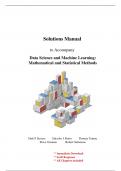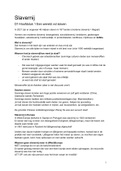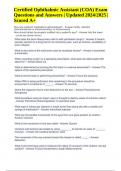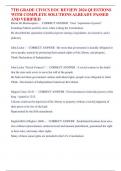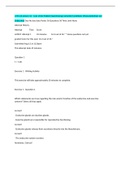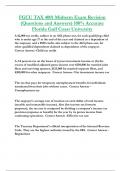Tentamen (uitwerkingen)
Solutions for Data Science and Machine Learning, 1st Edition by Kroese (All Chapters included)
- Vak
- Instelling
Complete Solutions Manual for Data Science and Machine Learning, 1st Edition by Dirk P. Kroese; Zdravko Botev; Thomas Taimre; Radislav Vaisman ; ISBN13: 9781138492530....(Full Chapters are included and organized in reverse order from Chapter 9 to 1)...1 Importing, Summarizing, and Visualizing Data ...
[Meer zien]
